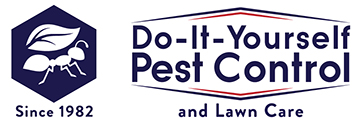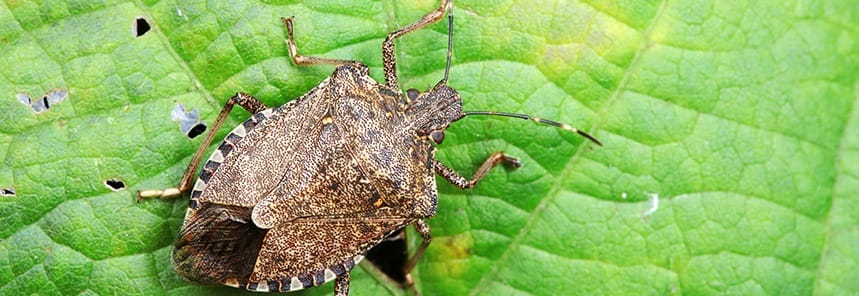
How To Get Rid Of Stink Bugs
October 30, 2024
The Brown Marmorated Stink Bug (BMSB)
Stink bugs, especially the Brown Marmorated Stink Bug (BMSB), release a foul odor and cause damage to homes and gardens each year. Accidentally introduced from Asia to Pennsylvania in the late 1990s, these pests have spread rapidly across the U.S., impacting both homeowners and farmers.
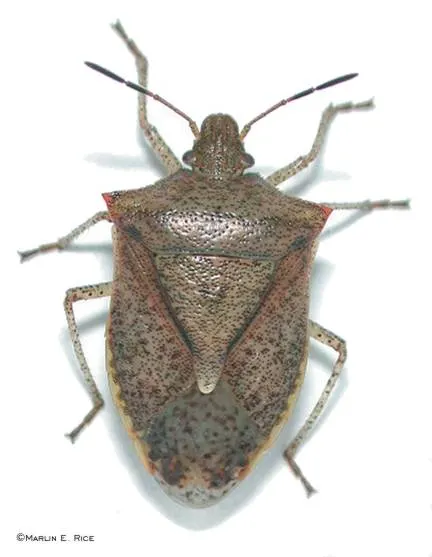
Identifying & Getting Rid Of Stink Bugs
While stink bugs are a nuisance, you can manage them effectively. In this guide, we'll explain how to identify these pests, prevent infestations, and eliminate stink bugs inside your home.
What Does a Stink Bug Look Like?
-
Typically brown or green, about 5/8 inches long.
-
Adults have a triangular-shaped thorax and a characteristic shield-shaped body.
-
Eggs are barrel-shaped and found in clusters on the undersides of leaves.
-
Nymphs, also known as baby stink bugs, look like smaller adults but lack wings.
-
Stink bugs release a strong odor as a defense mechanism.
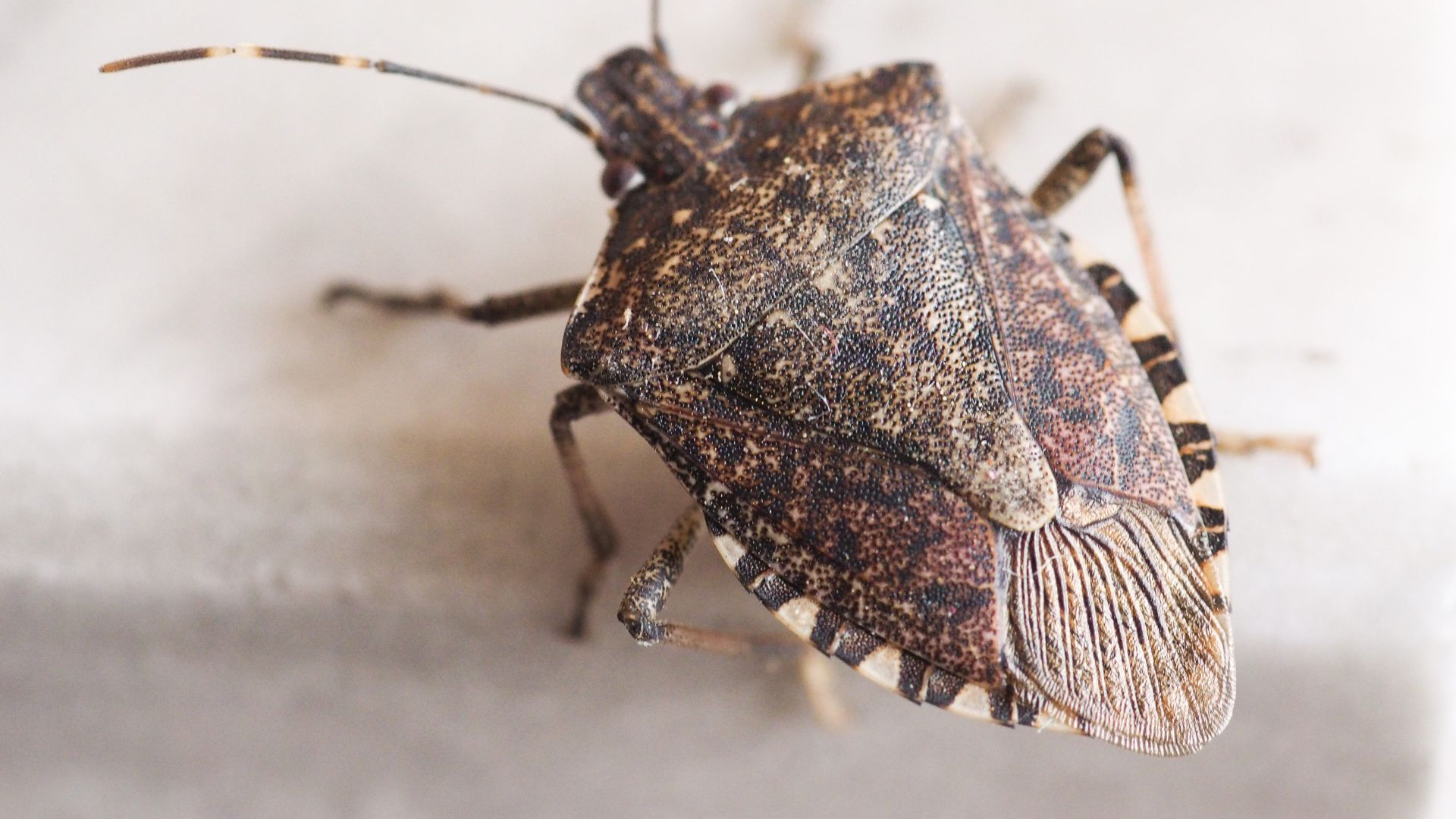
Stink Bug Diet and Life Cycle

Diet
Stink bugs primarily feed on plant sap, damaging crops like cabbage, beans, squash, and melons. Some species also consume other insects, such as caterpillars and beetle larvae.
Life Cycle and History
Stink bugs go through simple metamorphosis: egg, nymph, and adult. They do not reproduce indoors. There are typically 1-2 generations per year, with populations peaking from late September to early October. In warmer southern states, stink bug populations can be higher year-round.
Adult stink bugs often overwinter indoors, hiding in walls, attics, or other sheltered areas.
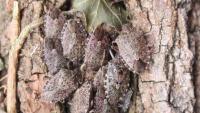
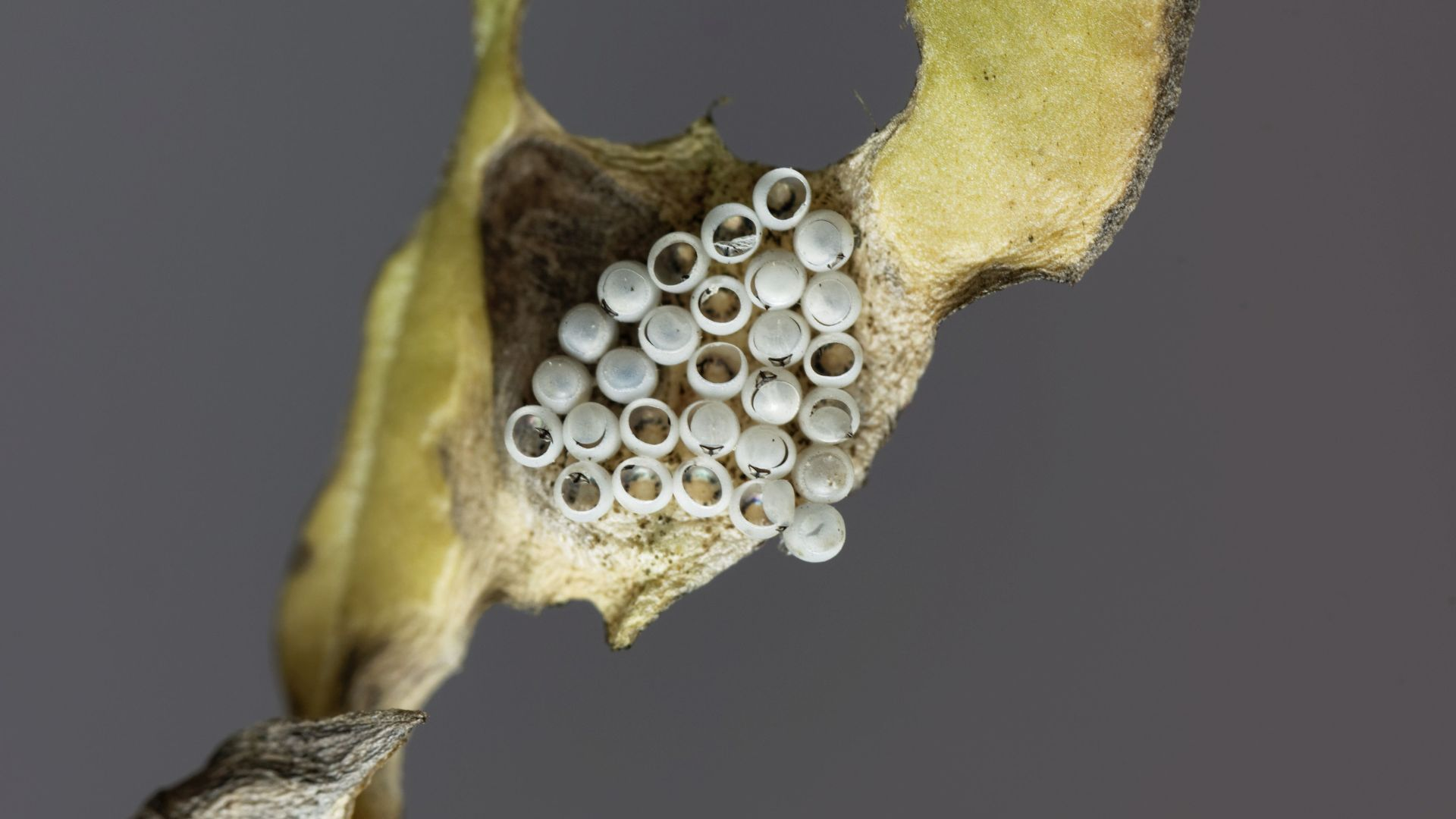
Stink Bugs Tend To Lay Eggs On Plant Material
Stink bug eggs can be found on the underside of leaves in clumps of 20-30 eggs. Adult stink bugs begin to mate in the spring, and females will lay their eggs on plants. These eggs will be laid in groups and are not plant-specific. Stink bug eggs are oval, ranging from light yellow to a yellowish-reddish color, and equipped with tiny spines forming fine lines along with the eggs.
When the stink bug eggs hatch, the baby stink bugs (“nymphs”) begin their search for food, which they find in your yard or garden. The nymphs, similar in appearance to the adult stink bug, are differentiated by their lack of wings. Nymphs feed throughout the early summer and molt to adults in late summer.
The stink bug will molt (5 stages) before becoming a full-grown adult from the nymph stage. They take a couple of months to mature.

Why Do Stink Bugs Infest Homes?
As temperatures drop in the fall, stink bugs seek warmth by clustering on buildings, particularly the south and west sides warmed by the afternoon sun. They enter homes through small cracks, door frames, attic vents, and other openings.
Where Stink Bugs Are A Problem
Stink bugs are particularly fond of the south and west sides of the building because they are warmed by the afternoon sun. If you have a stink bug infestation, you will find the majority of the bugs congregating on these sides of your home.
How Stink Bugs Get In Your House
Stink bugs often slip through tiny cracks in window frames, siding, or doorways. They are usually seeking a suitable place to stay warm and spend the winter. Because they hide in tiny gaps in your building structure, it can be difficult to find and kill them.
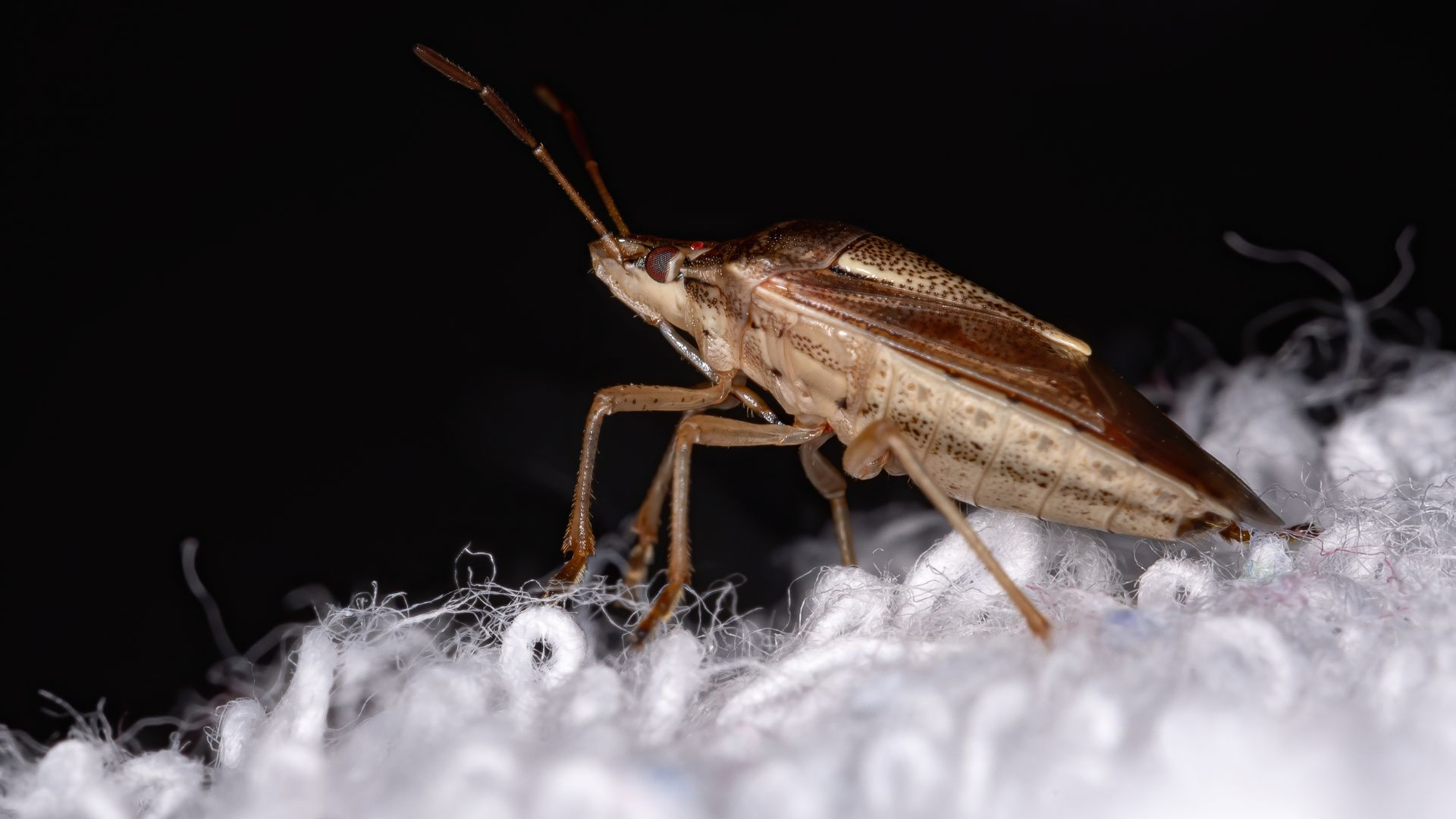
Once inside the building, they go dormant, and they fully expect to remain dormant until spring. The problem is that every time there is a warm sunny winter day, their hiding spot warms up, and they think it is spring.
After spending the winter months tucked away in the walls or the attic, they have forgotten how they got in. In their effort to get back outside, they accidentally end up inside the home. They don't want to be inside at all, they are merely looking for a way to get outside. This action may happen all at once in the spring or be sporadic throughout the winter and spring, depending on the weather.
Stink Bug Damage
Stink bugs feed on plants, buds, and fruit, causing distorted growth. While primarily considered agricultural pests, they can also damage garden plants and landscape vegetation.

How to Kill Stink Bugs
As tempting as it may be to squash a stink bug the moment you see it, you should think twice before doing so. When they are disturbed, or squashed, they will release the foul odor you know all too well. Releasing this odor is a defense mechanism intended to ward off predators and warn other stink bugs to flee. Squashing it may stop the bug from crawling around your home, but the pungent odor will remain in your house for hours after they are killed.
If you have a stink bug infestation in your home, don’t fret! There are simple steps that you can take to get rid of them without them stinking up your home. We have listed our top tips below to help you with how to remove stink bugs, both inside and outside of your home.
1. Use a Vacuum Cleaner
Use a vacuum with a narrow nozzle to suck up stink bugs from cracks and crevices. Empty the vacuum immediately to prevent the odor from spreading. Avoid using a bagless vacuum unless you can clean it thoroughly immediately.
2. Use Pest Control Treatment for Stink bugs
What kills stink bugs instantly? Stink bug sprays and insecticides. Products such as Avesta CS, Bifen IT, Cyper WSP, and Demon WP are very effective insecticides to get rid of stink bugs. These products stop them from congregating on the side of the home, either killing them or preventing their entry. These products also work well on a wide range of other pests.
3. Try a Natural Stink Bug Killer
If you prefer non-chemical solutions, mix equal parts hot water, dish soap, and white vinegar in a spray bottle. This solution kills stink bugs on contact and makes it harder for them to escape.
4. Remove Access to Food Sources
Another way to get rid of stink bugs is to eliminate their ability to find food in your home. Keep leftover food in airtight containers, keep your garbage in a sealed bin, and dispose of it on a regular basis. Vacuum regularly to eliminate other food sources such as crumbs on the floor.
Best Time To Get Rid Of Stink Bugs
The timing of the application is important. As the nighttime temperatures dip into the low 50s or even lower, you can expect these bugs to arrive. Focus on spraying the south and west exposure of the house.
When applying the stink bug spray, the more surface area you cover, the better the results will be. This may require the use of a ladder to reach the uppermost areas around the roof. Remember to use proper ladder safety protocol and, as always, be sure to read and follow all label directions for the pesticide you are using.
The Best Stink Bug Sprays
Sometimes, you can implement all of the preventative measures available, yet these smelly bugs still infest your home. Now you need a way to get rid of these pests quickly. So, what kills stink bugs instantly?
Insecticides are one of the most effective methods to kill stink bugs instantly, both inside the home and on the exterior. Like most insects, these bugs can be controlled with a range of insecticide sprays. Below, we have highlighted some of the best insecticides that will allow you to kill stink bugs:
-
Avesta CS
-
Bifen I/T Insecticide
-
Cyper WSP
How To Prevent Stink Bugs
The key to getting rid of stink bugs in the spring is preventing their entry in the fall. Once they have entered the home, it becomes extremely difficult to kill stink bugs. Below are our top tips for preventing stink bugs in your home:
1. Seal Entry Points
Stink bugs will enter your home through any crack and crevice they find. Without a place to enter, these pests will be unable to infest your house. Inspect the outside of your home and seal off any entry points that stink bugs may be sneaking into.
Look for any openings in the exterior of your home, if you find cracks around windows, doors, siding, utility pipes, behind chimneys, near dryer vents, underneath the wood fascia, and other openings, apply a good quality silicone latex caulk to block them. Seal all holes with a diameter larger than a pencil to prevent stink bugs from getting into your home.
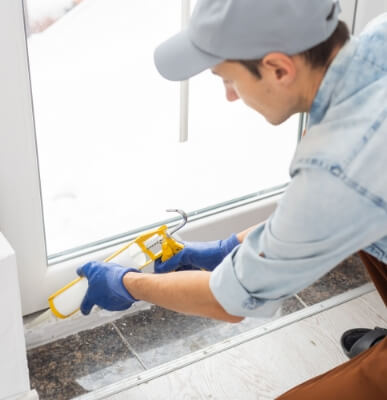
2. Turn off Outside Lights
Like many insects, stink bugs are attracted to lights. We recommend turning off your outside lights whenever they are not needed. This will help to ensure that stink bugs living in your yard or near your property won’t be enticed to make their way inside your house.
During the evenings, turn off porch lights and pull down window blinds to prevent light from spilling outside.
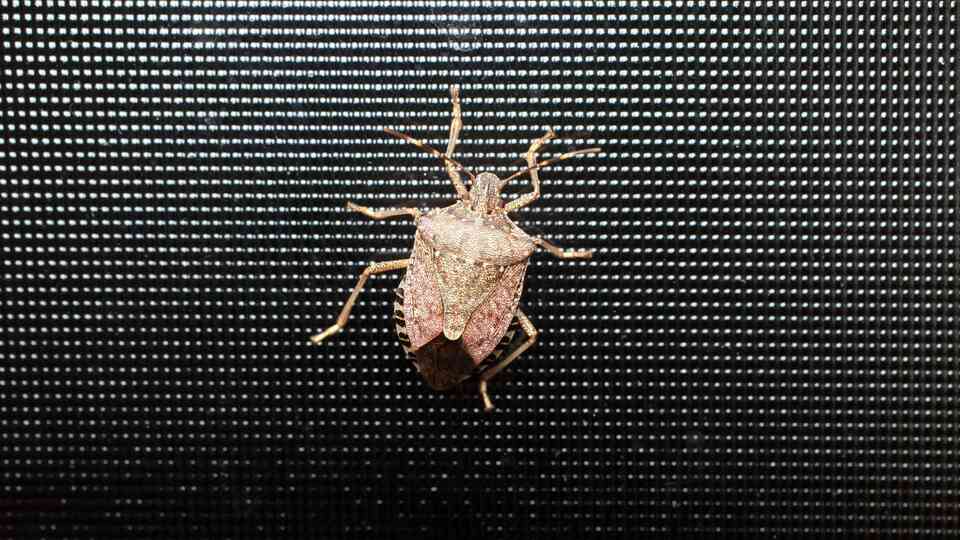
Use Screens to Prevent Stink Bugs
Ensure all windows, doors, and attic vents are screened to block entry.
4. Install Door Sweeps
Install sweeps on exterior doors to block stink bugs from crawling underneath.
5. Reduce Excess Moisture and Ventilate
To discourage these bugs from entering your home, remove areas of moisture on the exterior of your home. Blocked drains or leaking pipes will attract stink bugs.
Condensation inside the home can also be an issue, so ensure your home is well-ventilated. If you have excess moisture inside your house, consider placing a dehumidifier in the affected area. Attics, garages, and basements need to be ventilated to prevent insect infestations.
6. Maintain Landscaping
These pesky insects love native plants. They live on and eat ornamental shrubs, weeds, fruits, vegetables, and wild vines. By keeping your garden well-maintained, you can prevent stink bug infestations.
Are you having trouble figuring out how to get rid of stink bugs? If you have tried our DIY methods above, but your stink bug infestation is not improving, it may help to contact a pest removal expert. They will be able to assess the infestation and recommend the best way to get rid of and kill stink bugs. If you have any questions about our pest control products, contact us today.

